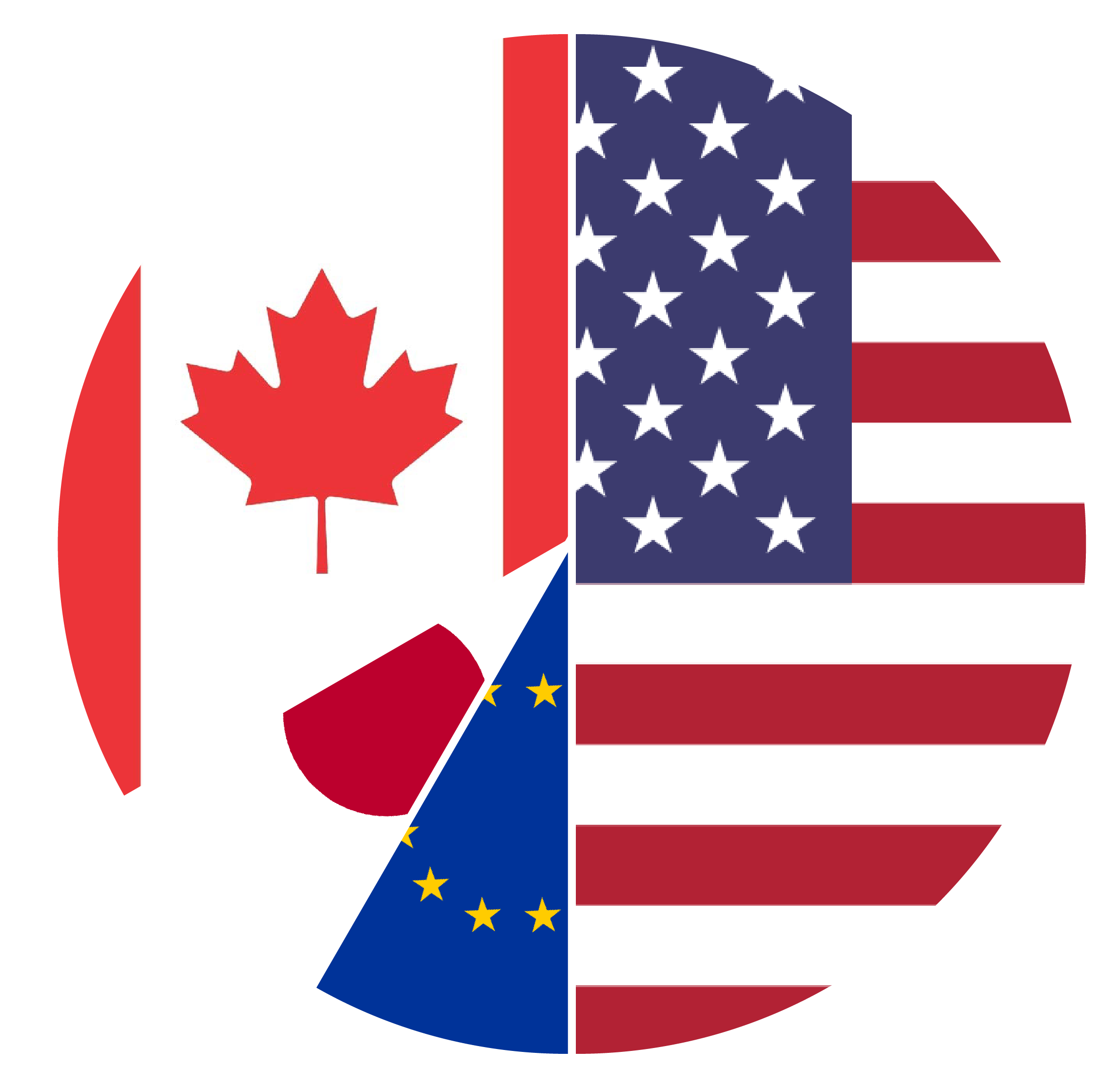August 16, 2022 | Quiet Counsel | 11 min read
Investing in Canada: Are We Just Banks and Rocks?
In the mid-1990s, the federal government removed foreign content limits for Canadian pension plans and later made similar changes for individual RRSPs that altered the way Canadians invested. The result has been a continuing trend of investors reducing the Canadian equity weight in their portfolios, in favour of global equities.
One reason that’s sometimes cited is that Canada’s stock market is made up largely of “banks and rocks,” and dominant companies in other industries like Nortel, Blackberry, Valeant and Shopify have a history of creating worrying concentrations in index-focused portfolios, and big holes when they lose their luster. With Canada only representing about 3% of the MSCI World Index by weight, why allocate to Canada at all?
While we can see this perspective, we do not believe it tells the full story. Global managers dedicate most of their resources to larger opportunity pools in the US, Europe and Japan leading to a significant number of missed opportunities in Canada.
And those opportunities add up. We recently did an analysis of the benefits and pitfalls of investing in Canada versus global stocks and presented them in this webinar. The key findings from that analysis follow below.
Over the last 25+ years, an investment in Canadian stocks would have produced a risk adjusted return superior to global stocks.
If a typical investor’s objective is to earn a return above inflation, a fair test for an equity portfolio is whether it can deliver Consumer Price Index (CPI) plus 5%1 , or approximately a 7% total return over the long term2. Using performance data for both the broad market and actively managed Leith Wheeler funds since 1995 (the longest period available for our Canada, US and international funds), we measured the experience of a hypothetical investor against this objective.
We looked first at the calendar year performance of the Leith Wheeler Canadian Equity Fund against the CPI plus-5% target, and the results were compelling (shown in Figure 1). The portfolio has been very successful in not just meeting, but also exceeding the objective. There were certainly down periods, but those years of negative returns typically bounced back significantly.
Figure 1: Performance of Leith Wheeler Canadian Equity Fund vs CPI plus 5%, Jan 1996 – Dec 20213,4

We then looked at how much risk was taken to achieve this outperformance. Figure 2 shows the results of some work we did which looked at the historical “information ratio.” The information ratio measures how efficient a manager is in generating outperformance – higher is better – so if you generate high returns but get there by taking lots of extra risk (and experience lots of volatility in returns), your information ratio will be low.
To isolate the impact of Canadian return streams on an overall global strategy, we compared how a Leith Wheeler global equity strategy would have performed against the CPI-plus-5% objective, if it contained either one-half Canadian equities or one-third. In each case the non-Canadian portion was comprised of two-thirds US and one-third international.
| Portfolio A: 1/3 Canadian & 2/3 Global | Portfolio B: 50/50 Canadian & Global |
 |  |
Figure 2: Information Ratios for Canadian Equity and Global Portfolios from May 31, 1995 to Dec 31, 20214,5
Reading left to right in the table, we see the following:
- The Canadian Equity Fund on its own produced the highest overall absolute performance and the highest information ratio, with a tracking error lower than its S&P/TSX Composite benchmark.
- The Global strategy on its own exceeded the CPI plus-5% hurdle (and its own benchmark), with lower volatility than Canada.
- The Global strategy with one-third Canada carried the lowest volatility, but the 50/50 global portfolio had a slightly higher information ratio. Both IRs lagged Canada on its own, but not by much.
- If you ignore the benefit of having Leith Wheeler as your active manager and look at just the benchmark columns: the S&P/TSX Composite posted the higher absolute return, with slightly higher volatility but net reaching almost double the information ratio of the MSCI World (Net) Index.
- The math clearly illustrates that pushing Canadian allocations even lower than one third would result in a continued decrease in value-add and information ratio, at least within this retrospective analysis.
Active management beat passive, and Canadian active dominated all other options.
Using the same 25+ year period of analysis and broadening our focus to investment managers in general, we found the median manager in Canada has been able to generate more value-add against its benchmark than its peers in US and Europe, Australasia, and Far East (EAFE) markets. (The median manager is the ‘middle’ manager – there are the same number of managers who earned less as earned more.) Despite being the leading region over the past decade, the US market has been difficult to beat by individual managers given how much trading and research is published on stocks there, and – until recently – the concentration of growth among the subgroup of “FA ANG” technology stocks6. Value-add in the international EAFE market has been more in-line with Canada and is the most consistent, with the median manager outperforming the index 100% of the time on a rolling 5-year basis. However, active management fees for the EAFE market are typically higher for Canadian investors.
We should note that this study captures data through December 31, 2021. In the six months ended June 30, 2022, Canadian markets outperformed US and international markets on the order of 9-10% in Canadian dollars (and the Leith Wheeler Canadian Equity Fund also significantly exceeded the S&P/TSX Index) – so these findings would be further bolstered by this recent period.
Figure 3: Experience of Median Manager in Beating the Index from May 31, 1995 to Dec 31, 20217
Canadian stocks are very attractive in their own right, from an opportunity and valuation standpoint.
Canada’s great governance, legal structure, and transparency makes it attractive for investment. With that said, experienced investment teams on the ground are arguably better able to identify opportunities and look through short-term issues given lower levels of analysis being done on Canadian stocks. For example, Alphabet (parent to Google) has 75 analysts covering it – it’s hard to gain a unique insight with that much attention on its every move.
At Leith Wheeler, our long-tenured Canadian Equity team has in many cases analyzed businesses for longer than the company management has been in place. Our deep knowledge of companies also provides us with an edge for effectively assessing ESG issues, particularly in relation to governance matters.
Canada has several world-class businesses that warrant material weightings relative to their foreign comparable. Going back to the notion that Canada is all “banks and rocks,” we believe that Canadian banks today are an opportunity, not a problem. Oligopolistic businesses with pricing power operating in a favourable regulatory environment, Canadian banks’ dominant businesses span banking, insurance, capital markets, and wealth management, and can generate consistently high returns within those businesses while keeping debt in check. They also tend to be less expensive and carry higher capital ratios than their US peers8.
Overall, Canadian stocks are also currently trading at a large discount to US ones. See Figure 4. While the two markets have tracked fairly closely for many years, US stocks ended 2021 with a price/earnings ratio of 22x, or about seven multiple points higher than Canada. After tumbling more than Canada through June 2022, US stocks remain considerably more expensive at 20x earnings while Canadian stocks continue trading in line with their long-term average of approximately 15x. The margin of safety is just much lower in the US.
Figure 4: Forward Price-to-Earnings Ratios for Canadian Stocks Decoupled from US ix
The problem with overpaying for stocks is you sacrifice future potential gains. Despite equity markets being quite correlated, market leaders do change. In May 2012, we gave a presentation to our clients titled, “Well Into the Future: Foreign Equities – A Decade of Frustration” where we recommended patience when it came to global equities after a decade of negative returns. We pointed out that a diversified equity portfolio remained important and reminded clients that cycles change.
Now, we find ourselves advising clients with a similar message regarding Canadian equities. We would like to remind clients that the strength in the US market and weakness in the Canadian market is priced into their multiples. Reducing Canadian equities in favour global equities today would be tantamount to selling low and buying high.
Figure 5: Market Leaders Over the Years: 10 Year Annualized Returns by Decadex
Canadian investments attract less tax than non-Canadian ones.
No discussion of investments would be complete without a word about the Tax Man. We have published many times on the taxation of investments (our most-recent Planning Matters covering it can be found here), and while the value of the credits has changed over the years, the conclusion remains that (in taxable accounts) investors enjoy a tax shield on Canadian dividends that they don’t from international ones. International holdings can also attract withholding taxes. Asset allocation should be driven by your objectives and the risk-return opportunities in each asset class and market – but at the margin, favourable tax treatment in Canada is a bonus.
With many world-class businesses trading at a discount to global peers and a demonstrated history of producing superior risk-adjusted returns, the Canadian equity market is not one to dismiss. Fads may come and go, but quality and value are what will best serve every portfolio.
1A real return of 2 to 3% is a typical target of total portfolio return for institutional investors. Assuming a typical 60/40 balanced portfolio, the equity return target would be a real return of 5%.
2Assuming long-term growth of the Consumer Price Index to be approximately 2%. Current levels are significantly higher but 2% represents a good long-term average, as well as the mid-point of the Bank of Canada’s target of 1-3%.
3Source: Leith Wheeler, Statistics Canada. Fund and index performance are total return and gross of fees expressed in C$ Currency. The Leith Wheeler Canadian Equity Fund is based on Series B return to September 30, 2004, then Series A returns thereafter.
4Source: Leith Wheeler, Statistics Canada, Standard & Poors, MSCI Inc., eVestment. Fund and index performance are total return and gross of fees expressed in C$ Currency. Information Ratio is calculated using monthly data between May 31, 1995, to December 31, 2021, and is annualized. The start date of May 31, 1995 represents the earliest available data for the relevant Leith Wheeler pooled funds. Foreign index returns are converted to C$ based on the Bloomberg FX rate as of June 30, 2020. The Bank of Canada noon rate was used prior to June 30, 2020. The Leith Wheeler Canadian Equity Fund is based on Series B return to September 30, 2004, then Series A returns thereafter. The Leith Wheeler Global Equity Strategy is a hypothetical portfolio based on a constant 2/3 weight in the Leith Wheeler/Barrow Hanley Global Advisors US Equity Strategy and 1/3 weight in the Leith Wheeler International Equity Pooled Fund Series C. The Leith Wheeler/Barrow Hanley Global Advisors US Equity Strategy is a hypothetical portfolio based on the Barrow, Hanley, Mewhinney & Strauss Diversified Large Cap Value asset-weighted composite of fully discretionary portfolios between October 31, 2000 to December 31, 2021. Performance prior to October 31, 2000 was based on the Leith Wheeler US Equity Fund Series B. The annualized return of the Consumer Price Index (CPI) +5% from May 31, 1995 to December 31, 2021 was 7.1%. Returns are illustrative.
5The analysis was done using two asset mixes for the Leith Wheeler All Equity Portfolio. The Leith Wheeler All Equity Portfolio A is a hypothetical portfolio with a constant 1/3 weight in the Leith Wheeler Canadian Equity Fund and 2/3 weight in the Leith Wheeler Global Equity Strategy. The Leith Wheeler All Equity Portfolio B is a hypothetical portfolio with a constant 1/2 weight in the Leith Wheeler Canadian Equity Fund and 1/2 weight in the Leith Wheeler Global Equity Strategy.
6FAANG stocks are represented by Meta (formerly Facebook), Amazon, Apple, Netflix, and Alphabet (formerly Google).
7Source: Leith Wheeler, eVestment. Fund and index performance are total return and gross of fees expressed in C$ Currency and represent the eVestment All Canadian Equity Universe, eVestment US Large Cap Equity Universe, and eVestment EAFE Large Cap Equity Universe. Foreign index returns are converted to C$ based on the eVestment FX rate. Please see endnotes regarding hypothetical performance and important information at the end of the presentation. Alpha of annualized return using eVestment monthly data from May 31, 2005 to December 31, 2021. Number of observations: All Canadian Equity Universe (37), US Large Cap Equity Universe (203), EAFE Large Cap Equity Universe (29). Rolling monthly 5-Year performance data in from May 31, 2005 to December 31, 2021
8Capital ratio indicates the amount of cash held as security against loans – higher is better.
IMPORTANT NOTE: This article is not intended to provide advice, recommendations or offers to buy or sell any product or service. The information provided is compiled from our own research that we believe to be reasonable and accurate at the time of writing, but is subject to change without notice. Forward looking statements are based on our assumptions, results could differ materially.
Reg. T.M., M.K. Leith Wheeler Investment Counsel Ltd.
M.D., M.K. Leith Wheeler Investment Counsel Ltd.
Registered, U.S. Patent and Trademark Office.






